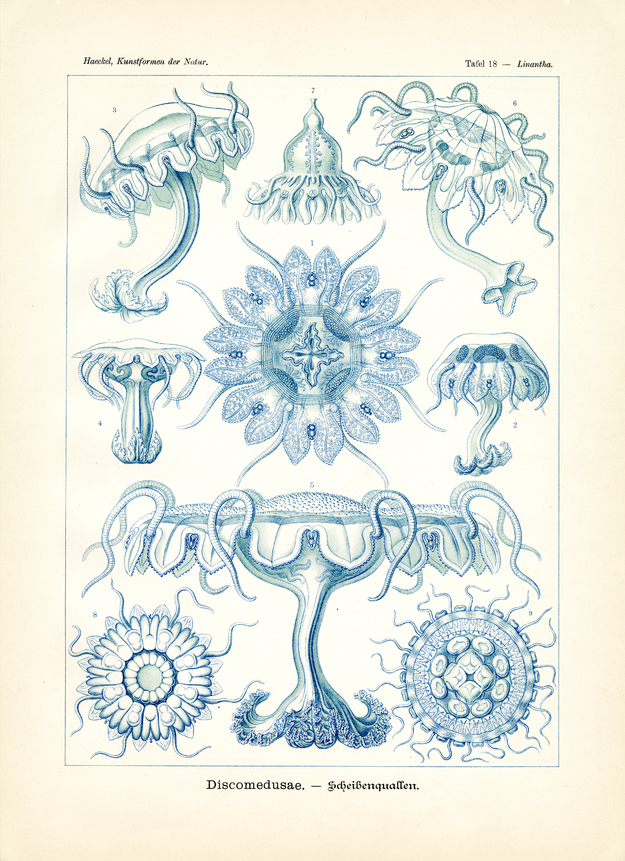Translation of the original German introduction by Ernst Haeckel:
Phylum of Cnidaria (Nesseltiere); - subclass of Acraspedae (Lappenquallen); - order of Discomedusae (Scheibenquallen); - suborder of Cannostomae (Rohrmündige).
Cannostomae form the oldest of the three suborders of Discomedusae, characterized by the possession of a long ‘mouth tube’ which has its source in the lower centre of the umbrella. At its base this cylindric and four-sided prismatic mouth tube is split into four short, often frilled lopes that surround the quadrangular mouth opening. At the top the mouth tube leads into the central gastrovascular cavity in which four intra-radial ‘stomach threads’ (Gastralfilaments, fig. 5) move freely. Towards the outside of these are, within the lower stomach wall, four or eight circular gonads (fig. 1, 2 and 9). On its outer side the rim of the umbrella is split into 16 lopes; in between these lopes eight adradial, flexible tentacles and eight ‘sensing buds’ or Rhopalia (four perridial and four interradial) are sitting alternately. Each ‘sensing bud’ is composed of an eye, a ‘hearing bubble’ and a ‘smelling groove’.
Translation by VR Translators Bangalore
We've scanned the original lithography at 1200dpi on the Epson A3 scanner of A3 scanner huren. You can download a 400dpi JPEG here. If you need the original high resolution TIFF file, please contact us at info@mediamatic.net
